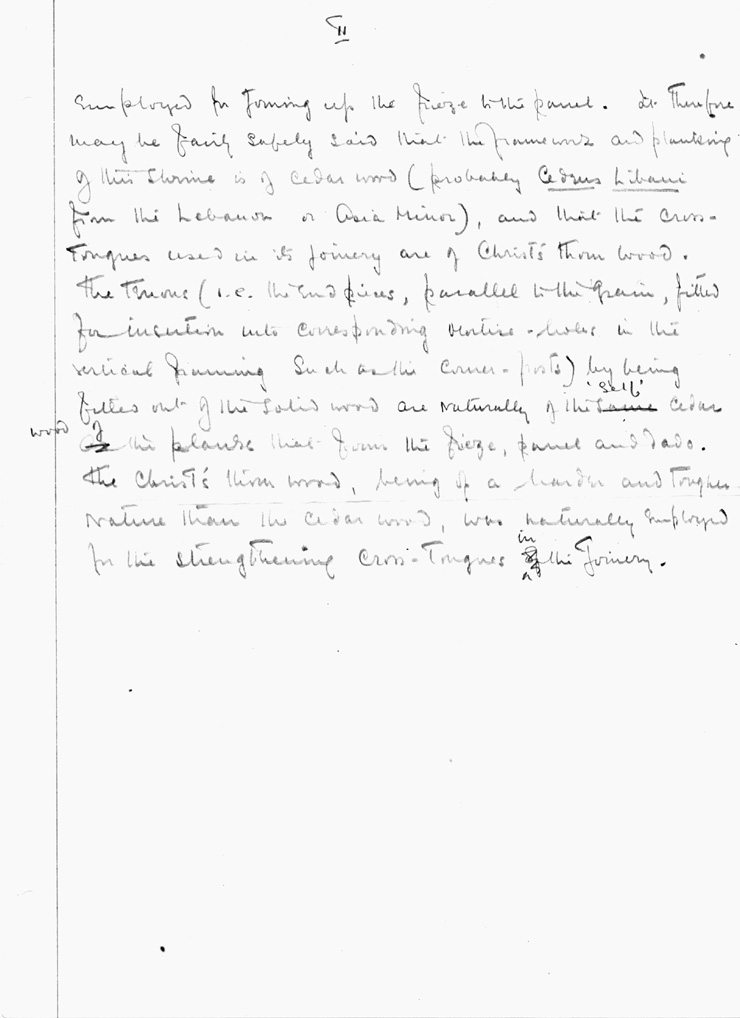Handlist description: Fourth (innermost) shrine
Card/Transcription No.: 239-08
IIemployed for joining up the frieze to the panel. It therefore may be fairly safely said that the framework and planking of this shrine is of cedar wood (probably Cedrus Libani from the Lebanon or Asia Minor), and that the cross-tongues used in its joinery are of Christ's Thorn wood. The tenons (i.e. the end pieces, parallel to the grain, fitted for insertion into corresponding mortise-holes in the vertical framing such as the corner-posts) by being fitted out of the solid wood are naturally of the `self' cedar wood of the planks that form the frieze, panel and dado. The Christ's Thorn wood, being of a harder and tougher nature than the cedar wood, was naturally employed for the strengthening cross-tongues in the joinery.
